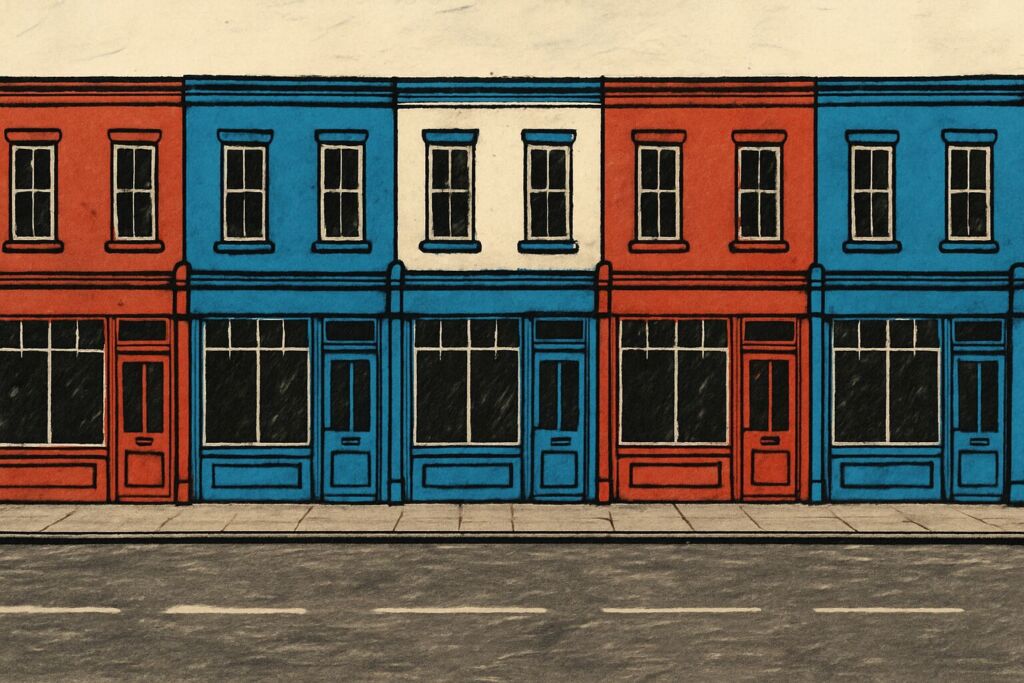Same Streets, Same Feeds: The Gentrified Digital Advertising World
by Shirley Marschall on 11th Jun 2025 in News

This week our columnist Shirley Marschall takes on the homogeneity of the digital world, and why the dominance of the walled gardens represents convenience, not strategy...
Once upon a time, every city centre had its own character. Local shops. Neighbourhood quirks. A sense of place. But over time, global brands moved in, rents skyrocketed, and the charm faded. Now, from Berlin to Boston, you see the same stores, the same signs, the same coffee chains.
The digital world isn’t so different.
It’s like every corner of the web got algorithmically gentrified. Local flavour replaced by global templates. Authenticity squeezed out by optimisation. And just like in real cities, the same chains moved in: Amazon, Google, Meta. Different screens, same storefronts.
The result? A digital landscape where attention is mined, not earned, and where the "soul" of the internet risks being paved over by platforms that promise ease, scale, and safety… at the cost of diversity and imagination.
And the reason? Everyone wants the easy button.
Advertisers are from Venus, ad tech is from Mars
Ad tech lives on Mars. Complex systems. Auction dynamics. Bid shading. Frequency management. Identity solutions. Log-level data. A whole language of its own.
Advertisers live on Venus. Funnels. Awareness. ROI. Business outcomes. They crave clarity and simplicity, even if it means walking into black boxes with their eyes wide shut.
But instead of bridging the gap, both sides reach for the easy button. The shortcut. The media plan no one gets fired for. Convenience flattens everything.
Didn’t we forget two other planets?
Agencies were meant to be translators. Advocates. Strategic guides. But somewhere between bundled deals and preferred partnerships, many stopped asking the hard questions. Audits became optional. Black boxes became normal. The third wheel in this interplanetary triangle? Quietly complicit.
And the consumer? Still stuck on Earth. Tapping through stories. Watching CTV. Skipping pre-rolls. Wondering why the same ad followed them for weeks.
Tracked. Nudged. Annoyed. But rarely respected.
Easy buttons. Everywhere
Ad tech - and the way we buy media - is slowly turning the internet into a series of identical, mass-produced storefronts. Built for scale. Stripped of nuance. Optimised to death.
So why do Amazon, Meta, and Google keep winning? Not because they offer the best outcomes but because they offer the fewest questions.
Google says: Skip the funnel. Buy more YouTube.
Amazon says: Plug into our retail graph. It’s all you need.
Meta says: Skip measurement. Just connect your bank account.
And the ecosystem listens. Because easy is seductive. But easy isn’t strategy.
Google says skip the funnel and everyone nods
Google recently told advertisers to "forget the funnel" and shift budget to CTV. The response? Silence. Nodding heads.
The cookie survives, but the funnel dies. What a plot twist.
It’s not strategy. It’s inertia. And in most rooms, Google is always present. So is Amazon. So is Meta. They write the whitepapers. Host the webinars. Control the tools. Set the benchmarks. And when they speak, the ecosystem listens.
Amazon ad tech: Neither fish nor fowl
Amazon is the retail giant. The cloud titan. A rising CTV player. But in ad tech? It was treated like a side gig for years and now it’s being used not because it’s loved, but because it’s available.
Amazon’s DSP isn’t full-stack. It’s not independent. It’s not particularly remarkable. But it’s there. Easy to slot in.
It’s the Adobe DSP all over again: technically sound, strategically uncertain.
Brands use Amazon for what only Amazon can offer (shopper data, Prime Video inventory, etc.) but it’s rarely the centrepiece of a media strategy. It’s a line item. Not a lead.
We’re not building strategy. We’re buying defaults
Jounce Media’s State of the Open Internet report makes it plain: marketers aren’t optimising for outcomes. They’re optimising for convenience.
The result? A cycle of sameness: Same platforms. Same formats. Same ad experiences.
We talk about innovation… but chase certainty.
We talk about consumer centricity… but buy what’s easiest.
We talk about relevance… but run the same ad everywhere.
The web feels smaller. Duller. More rigged.
The easy button is killing strategy
This isn’t a call to romanticise complexity but it is a call to restore strategy.
To ask:
- Why are we buying here?
- What’s actually working?
- Who is this for?
Because if every brand runs the same campaigns, buys the same placements, and trusts the same default platforms… What exactly is left of the strategy??
There’s still a way out, but it’s narrow
Not all is lost. Some players are proving there’s another way.
The Trade Desk just posted a strong Q1, growing 25% and seeing rising adoption of its AI platform, Kokai. But even that bright spot comes with pressure. Staying independent and delivering is only getting harder in a world addicted to defaults.
Still, it’s a signal: strategy is possible. But only if we stop chasing what’s easiest and start choosing what’s right.
The takeaway: Gentrification, defaults, and the death of distinction
Maybe it’s just human nature. We seek comfort. We follow the crowd. We choose convenience, even when it flattens everything around us.
Just like city streets filled with the same stores, the digital world is turning into a landscape of sameness. Not because there’s no alternative, but because we stopped asking for one.
The platforms didn’t force this. We opted in. We rewarded ease. We traded curiosity for efficiency.
But strategy doesn’t come from defaults. And impact doesn’t come from sameness.
If we want something different, if we want MORE - more original, more meaningful, more effective - we’ll have to choose it. On purpose. Every time.
Because when everything starts to look the same, maybe the real challenge isn’t thinking outside the box. It’s remembering we can.








Follow ExchangeWire